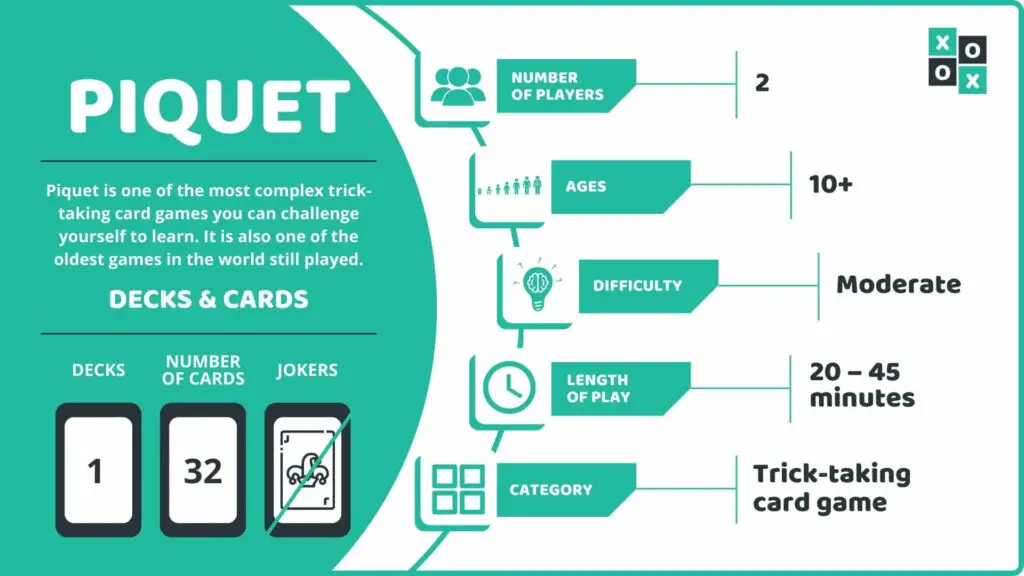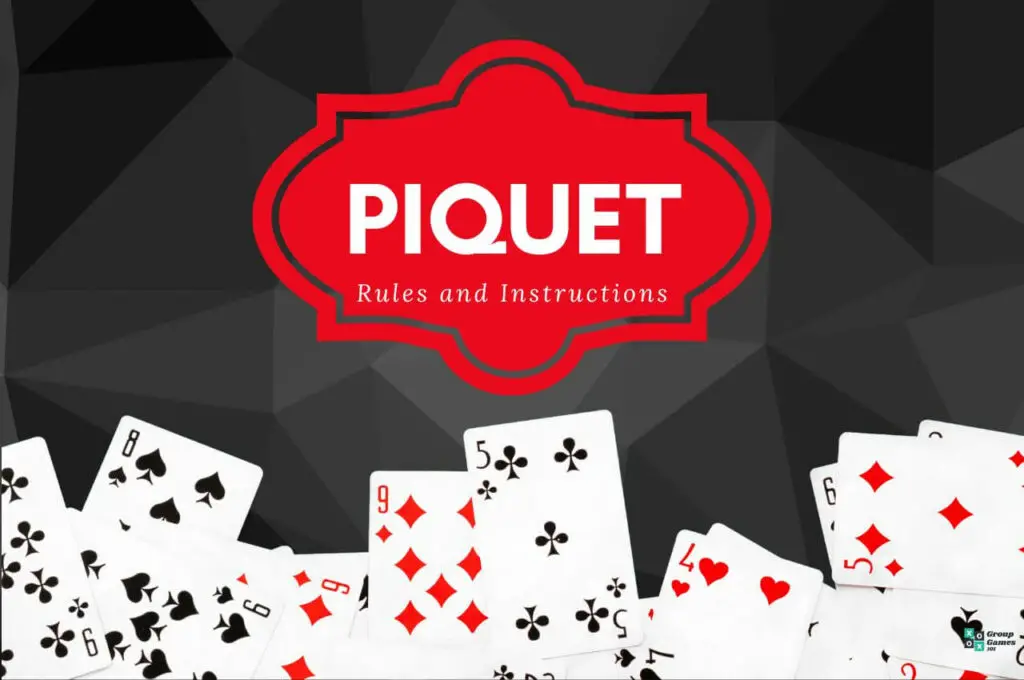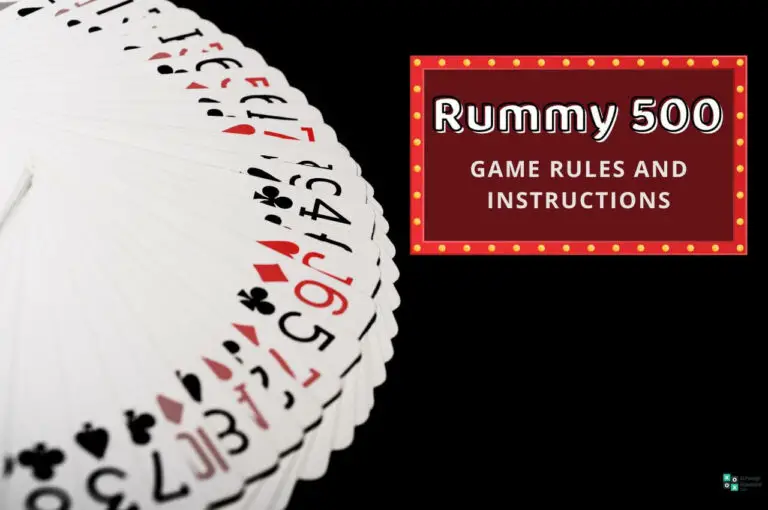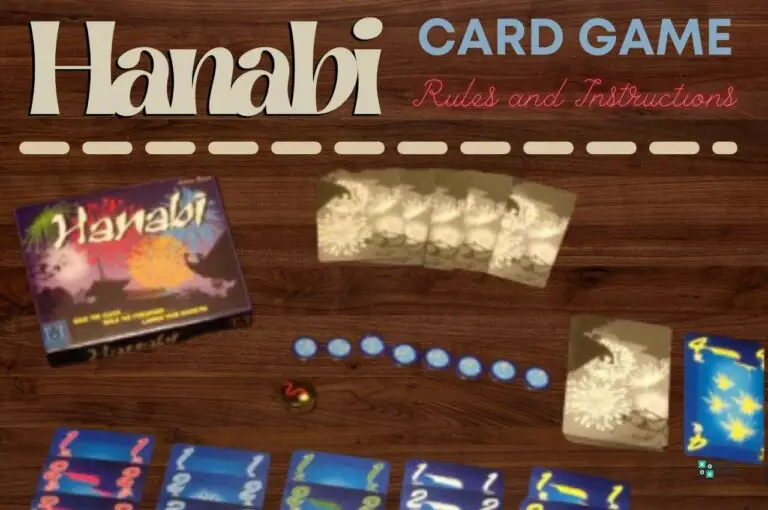Piquet is a challenging trick-taking card game for two players. If you’d like to try it but have no idea how it’s played, my Piquet card game rules guide is just what you need.
Piquet is no different – it spread across the old continent during the Hundred Years’ War and became a massive hit. Luckily for us, it survived until today.
Piquet is a pretty unique and quite complex game. If I had to compare it to something, I’d say it’s close to Euchre (check our Euchre rules) or Sheepshead (see Sheepshead rules).
If you’re a beginner, prepare for a relatively sharp learning curve. Piquet involves a wide range of scoring rules and actions, so it takes a while to get into the flow.
This Piquet card game rules guide will cover the following:
- What is Piquet?
- What you’ll need to play Piquet
- Piquet card game rules
- How to play the Piquet card game (video tutorial)
- FAQs
- Other similar games to Piquet (our guides)
Continue reading for detailed guidance on how to play Piquet.
What is Piquet?

Piquet is a trick-taking and points-collecting card game for two players.
From my experience, it is primarily suitable for adult players, but older and somewhat experienced kids may enjoy it too.
Number of Players: 2 players
Ages: 10+
Difficulty: Moderate
Length of Play: 20 – 45 minutes
Category: Trick-taking card game
Similar to: Euchre, Sheepshead, Écarté
Main Objective: Collect points through card combinations and trick winning.
Why We Love It: Piquet is one of the most complex trick-taking card games you can challenge yourself to learn. It is also one of the oldest games in the world still played.
What You’ll Need to Play Piquet
If you want to play Piquet, you will need a single standard 52-card deck.
However, you’re not going to use the whole deck. Before you start playing, sort out all twos to sixes, so you end up with a deck of 32 cards running from seven to ace in each suit.
Piquet Card Game Rules and Gameplay
The objective of this game is to collect as many points as possible. This can be done by creating various card combinations, performing some actions, or winning the tricks.
Starting the Game
As I’ve already explained, before you start playing, sort out all cards below sevens from your deck. In this game, sevens will be your lowest cards, and aces will be the highest.
Now you can proceed to the deal: Each player gets 12 cards, typically distributed in groups of two or three at a time. The players hide their cards from each other.
After dealing 24 cards among the players, you will have eight remaining cards. Place them face-down to the center of the table as your draw deck.
Before the beginning of the game, each player can change up to 5 cards from their hand with the draw deck cards. Of course, changing is purely optional. The non-dealer goes first.
When everyone is settled on their cards, you’re ready to start playing Piquet.
How to Play Piquet
Piquet is all about collecting points – and there are many of them to collect.
The game begins with the non-dealer player claiming his points-worth card combinations.
Therefore, let’s start with a quick rundown of the card combinations and actions/achievements that can earn you some points in this game.
Combinations Worth Points
- The highest number of cards in a single suit = 1 point per each such card
- The longest cards sequence in order and matching suit = 1 point per each such card. Every set must have at least three cards.10 points bonus for 5+ cards.
- Highest ranking set of 3 cards = 3 points
- Highest ranking set of 4 cards = 14 points
Actions/Achievements Worth Points
- Leading the trick = 1 point
- Winning the trick led by your opponent = 1 point
- Winning the last trick = 1 point
- Winning the most tricks = 10 points
- Winning all the tricks = 40 points
The player who goes first announces the combinations he thinks he can score in. But only the genuinely better player in given categories can win.
After the announcement, the player’s opponent will comment on his claim in one of the following ways:
- Good (The first player is really better in the given category)
- No good (The opponent thinks he has a better combination in the claimed category)
- Equal (It is impossible to tell at the moment)
There are numerous rules to decide in case of equal combinations which one is better.
In the case of the highest number of cards of a single suit, the winner is determined by the total score of their cards when:
- Ace is worth 11 points
- K, Q, J, and 10 are worth 10 points
- 9, 8, 7 are worth their face value
In the case of card sequences, the higher-ranking starting card of the sequence wins.
Example Turn
Since I know very well how confusing and overwhelming this game can be at first, let me illustrate the abovementioned rules with a brief walkthrough of a typical Piquet turn:
- Player 1 goes one category after another and announces which one they believe they could win while revealing their actual combination.
- In the 1st category, the player claims victory because they have six clubs in hand.
- Player 2 says, “Equal” – they have six hearts.
- When the cards are compared, it is revealed that Player 2’s hearts have a higher total score than Player 1’s clubs.
- Player 2 wins this category and scores 6 points.
- Player 1 moves to the next category but does not have a strong sequence, so he skips it.
- This continues until Player 1 does not evaluate his chances in all the categories, Player 2 doesn’t respond, and the results are not revealed through comparison.
Player 1 now plays one of his cards to the center of the table to lead the first trick. But before Player 2 responds, he also makes his claims on the categories above.
When he’s done, he finally plays his card into the trick, and the game moves to the next phase.
Trick-Taking Phase
Players are obliged to follow the leading card’s suit (i.e., if Player 1 leads with a club, Player 2 should also play a club card). If it’s not possible, they can play any card instead.
The player with the highest ranking card in the leading suit wins the trick and puts all the cards won on their side of the table. The winner of the trick leads to a new trick.
This continues until the players play all their cards. Keep track of the actions and achievements worth points (as described in the table above).
Piquet Scoring
Keep a record of all the scores awarded throughout the round following the abovementioned rules and point charts.
The game continues for six deals. Then count the total scores for both players and see who has more points and thus wins the game.
How to Play Piquet Card Game – Video Tutorial
Piquet Card Game Frequently Asked Questions
What is Carte Blanche in Piquet?
If one of the players does not have any face cards in his hand after the initial deal, it is declared as Carte Blanche. In this case, cards have to be reshuffled and dealt again.
What is a Piquet deck?
Piquet was traditionally played with a unique French-suited deck of 32 cards, so you didn’t have to sort out any cards and could play immediately. This was a Piquet deck or pack.
Can you create sets of any cards in Piquet?
There are various interpretations of Piquet’s card combination rules. Some do not distinguish between different ranks of cards; others allow only sets of tens and above.
Discuss with your opponent which version of the rule you will apply to prevent confusion.
Other Similar Games to Piquet (Our Guides)
Do you like Piquet? Check our guides to the following Piquet alternatives before leaving::
- Euchre rules
- Wizard rules
- 99 card game rules
- Sheepshead rules
- Joker rules
- Pitch card game rules
- Spades card game rules
- Oh Hell card game rules
- Bridge card game rules
- Écartí card game (guide coming soon)








